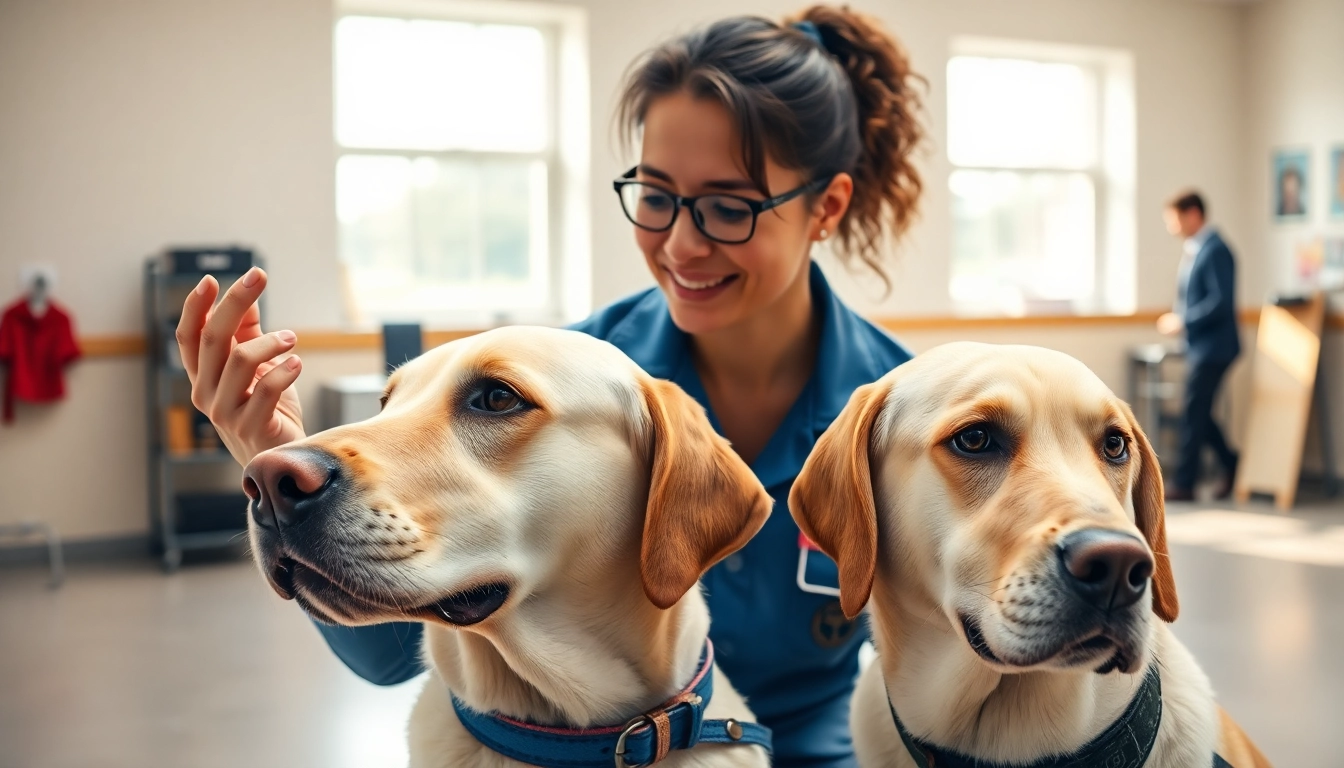Understanding Service Dogs
Defining Service Dogs and Their Roles
Service dogs are specially trained animals that assist individuals with disabilities in navigating daily life challenges. Unlike emotional support animals or therapy dogs, service dogs are individually trained to perform tasks that directly mitigate the handler’s disability. This distinct function grants them access rights to public spaces, including restaurants, stores, and public transportation, where other animals may not be permitted.
Common tasks performed by service dogs include guiding individuals with visual impairments, alerting those with hearing loss, facilitating mobility for persons with physical disabilities, and calming individuals with psychiatric conditions like anxiety or PTSD. Their training involves extensive obedience training, socialization, and specialized task training tailored to the needs of the individual they will assist.
Different Types of Service Dogs
Service dogs come in various forms, each designed to meet the specific needs of their handler:
- Guide Dogs: These dogs assist individuals with visual impairments by navigating obstacles, stopping at curbs, and finding directions.
- Hearing Dogs: Trained to alert individuals with hearing loss to sounds like doorbells, alarms, or a person calling their name.
- Mobility Assistance Dogs: These dogs help people with physical disabilities by retrieving items, opening doors, or providing balance support.
- Medical Alert Dogs: Trained to detect medical conditions such as seizures or low blood sugar and to alert their owner or fetch help.
- Psychiatric Service Dogs: These dogs assist individuals with mental health disorders by offering emotional support and performing tasks to reduce anxiety and stress.
Legal Rights and Regulations
Under the Americans with Disabilities Act (ADA), service dogs are granted specific rights that allow them to accompany their handlers in any area where the public is permitted. This legal framework ensures that individuals with disabilities can access essential services and interact with society more fully. However, it is crucial for both handlers and businesses to understand the limitations of this law. For example, the ADA does not recognize emotional support animals as service animals, which means they do not receive the same access rights.
Recognizing Your Needs
Assessing Personal Requirements
Before considering buy a service dog, it’s essential to assess your personal requirements comprehensively. This assessment should include understanding the nature of your disability and how a service dog could assist you. It’s beneficial to make a list of tasks you’d like help with and discuss these with a healthcare professional who has experience with service animals.
Matching Disorders with Suitable Dogs
Each type of service dog is suited for specific conditions. For individuals dealing with mobility impairments, a mobility assistance dog may be ideal, whereas someone coping with PTSD might benefit more from a psychiatric service dog. Educating yourself about which breed or type of service dog aligns with your specific needs will ensure you make informed decisions that enhance your quality of life.
Professional Assessments and Recommendations
Engaging a professional evaluator or a service dog organization can provide valuable insights during your decision-making process. They may conduct assessments to determine whether a service dog is a suitable option for your needs. In those assessments, they can offer guidance on training programs that align with your requirements and address any concerns you may have about the integration of a service dog into your life.
The Buying Process
Where to Buy a Service Dog
Buying a service dog requires thorough research and consideration. The best place to start is reputable organizations that have a proven track record in training service dogs. It’s advisable to avoid purchasing a dog from unverified sources that may prioritize profit over quality training and welfare of the animals. Consider local service dog organizations, training centers, or breeders known for enhancing the lives of individuals with disabilities.
Understanding Pricing and Payment Plans
The cost of acquiring a service dog can vary widely based on the training level, the breed, and the organization. Generally, expenses associated with acquiring a service dog can range from $15,000 to $30,000. Understanding these costs can help you budget effectively. Some organizations offer financing plans, grants, or scholarships, making this vital resource more accessible for individuals needing assistance.
Questions to Ask Before You Buy a Service Dog
Before committing to buy a service dog, it’s essential to ask relevant questions to ensure you are making an informed decision:
- What specific tasks has the dog been trained to perform?
- What type of temperament does the dog possess?
- What kind of ongoing support and training will be provided?
- Are there any health guarantees or policies in place?
- What is the organization’s overall mission and reputation?
Training and Support
The Importance of Ongoing Training
After acquiring a service dog, ongoing training is crucial for maintaining the dog’s skills and reinforcing its behavior. This continual education helps to ensure that the service dog can effectively assist its handler while adapting to changes in routines or environments. Regular training sessions with professional trainers also provide opportunities for handlers to improve their skills and bond with their dogs.
Finding Local Training Programs
Identifying a reputable local training program is vital for handlers who wish to continue their education with their service dog. Look for programs that tailor their training for service dogs and their specific tasks. A strong focus on positive reinforcement can significantly improve training outcomes, ensuring that dogs develop skills in a supportive and encouraging environment.
Resources for Handler Education
Several resources are available for handlers seeking to educate themselves about the best practices in caring for and training service dogs. Online forums, books, workshops, and local meet-ups provide valuable insights and recommendations. These educational opportunities equip handlers to create a structured and fulfilling environment for their service dogs, ensuring a successful partnership.
Living with a Service Dog
Integrating a Service Dog into Daily Life
Integrating a service dog into your daily life can be both rewarding and challenging. Establishing a daily routine that incorporates the dog’s needs—such as exercise, training sessions, and socialization—brings structure to everyday activities. Creating an environment that promotes accessibility while respecting the dog’s working role is equally crucial for both the handler and the service dog.
Traveling and Managing Public Spaces
Traveling with a service dog requires advance planning to ensure compliance with rules and regulations while also accommodating the dog’s needs. Educating yourself about pet policies of airlines, hotels, and public transport systems is essential. Many places offer specific accommodations for service dogs, so knowing your rights helps navigate these situations smoothly.
Building a Lasting Bond and Understanding Signals
Building a strong bond with your service dog enhances their working capabilities. Understanding canine body language, behavior signals, and vocalizations will improve communication and deepen your relationship. Engaging in shared activities and training sessions fosters mutual respect and understanding, establishing a solid framework for effective teamwork and companionship.



